COVID-19 pandemic in Japan
The COVID-19 pandemic in Japan is part of the worldwide pandemic of coronavirus disease 2019 (COVID-19) caused by severe acute respiratory syndrome coronavirus 2 (SARS-CoV-2). The Japanese government confirmed the country's first case of the disease on 16 January 2020 in a resident of Kanagawa Prefecture who had returned from Wuhan, China.[3] This was followed by a second outbreak that was introduced by travellers and returnees from Europe and the United States between 11 March 2020 and 23 March 2020.[4][5] According to the National Institute of Infectious Diseases, the majority of viruses spreading in Japan derive from the European type while those of the Wuhan type have been disappearing since March.[6][7][8] On 5 October 2020, the number of confirmed coronavirus cases in Japan exceeded the number of confirmed coronavirus cases in China. At the end of October 2020, the number of confirmed cases in the country crossed the 100,000-mark. The number of confirmed cases in Japan also crossed the 200,000-mark on 22 December 2020, the 300,000-mark on 14 January 2021 and the 400,000-mark on 6 February 2021. At the end of 2020, there were about 230,000 COVID-19 cases in the country. On 20 January 2021, the number of COVID-19 deaths in Japan exceeded the number of COVID-19 deaths in China.
| COVID-19 pandemic in Japan | |
|---|---|
 Confirmed cases per 100,000 residents by prefecture[lower-alpha 1] | |
| Disease | COVID-19 |
| Virus strain | SARS-CoV-2 |
| Location | Japan |
| First outbreak | Wuhan, Hubei, China |
| Index case | Kanagawa Prefecture |
| Arrival date | 16 January 2020 (1 year, 3 weeks and 2 days) |
| Confirmed cases | 404,990[1][2] |
| Recovered | 365,238[1][2] |
Deaths | 6,395[1][2] |
| Fatality rate | 1.58% |
| Government website | |
| Ministry of Health, Labour and Welfare (in Japanese) | |
The Japanese government has adopted various measures to limit or prevent the outbreak. On 30 January 2020, former prime minister Shinzo Abe established the Japan Anti-Coronavirus National Task Force to oversee the government's response to the pandemic.[9][10] On 27 February 2020, he requested for the temporary closure of all Japanese elementary, junior high, and high schools until early April 2020.[11] As the pandemic became a concern for the 2020 Summer Olympics, the Japanese government and the International Olympic Committee negotiated its postponement until 2021.[12]
On 7 April 2020, Abe proclaimed a one-month state of emergency for Tokyo and the prefectures of Kanagawa, Saitama, Chiba, Osaka, Hyogo, and Fukuoka.[13] On 16 April 2020, the declaration was extended to the rest of the country for an indefinite period.[14] The state of emergency was lifted in an increasing number of prefectures during May 2020, extending to the whole country by 25 May 2020.[15]
Japan's death rate per capita from coronavirus is one of the lowest in the developed world, despite its aging population. Factors suggested to explain this include the government response, a milder strain of the virus, cultural habits such as bowing etiquette and wearing face masks, hand washing with sanitizing equipment, a protective genetic trait, and a relative immunity conferred by the mandatory BCG tuberculosis vaccine.[16]
On 16 January 2021, the first anniversary of the beginning of the pandemic in Japan was commemorated. It was two days after the number of confirmed cases in the country exceeded 300,000.
Timeline
The 2020 coronavirus pandemic in Japan can be divided into two waves based on the genome sequence of the country's COVID-19 virus.[6][7][17][18] The National Institute of Infectious Diseases (Japan) (NIID) has determined from its genetic research that the COVID-19 variant of the first wave is derived from the Wuhan type that is prevalent in patients from China and East Asia. After entering Japan in January 2020 through travelers and returnees from China, the virus caused numerous infection clusters across the country before beginning to subside in March. Japanese medical surveillance confirmed its first case of the virus on 16 January 2020 in a resident of Kanagawa Prefecture who had returned from Wuhan.[3][19][20]
The first wave was followed by a second one that originated from a COVID-19 variant of the European type that is traced back to early patients from France, Italy, Sweden, and the United Kingdom.[6][18] Japanese medical surveillance detected the second wave on 26 March 2020 when the government's expert panel concluded the likelihood of a new outbreak caused by travelers and returnees from Europe and the United States between 11 March 2020 and 23 March 2020.[4][5] The NIID has established that the majority of viruses spreading in Japan since March is the European type. This has led it to conclude that the data "strongly suggests" that the Japanese government has succeeded in containing the Wuhan variant and that it is the European variant that is spreading across the country.[21]
In terms of the number of confirmed COVID-19 cases, Japan overtook China on 5 October 2020. The country also reached the first grim milestone of 100,000 COVID-19 cases at the end of October 2020. On 22 December 2020, Japan reached the second grim milestone of 200,000 cases. There were also about 230,000 cases in the country at the end of 2020. On 14 January 2021, Japan reached the third grim milestone of 300,000 cases. Six days later, the country overtook China in terms of the number of COVID-19 deaths. Japan also reached the fourth grim milestone of 400,000 COVID-19 cases on 6 February 2021.
Government response
Phase 1: Containment
The initial response of the Japanese government to the COVID-19 outbreak was a policy of containment that focused on the repatriation of Japanese citizens from Wuhan, the point of origin of the pandemic, and the introduction of new border control regulations.[22]
On 24 January 2020, Abe convened the Ministerial Meeting on Countermeasures Related to the Novel Coronavirus at the Prime Minister's Office with members of his Cabinet in response to a statement by the World Health Organization (WHO) confirming human-to-human transmission of the coronavirus. Abe announced that he would introduce appropriate countermeasures to the disease in coordination with the NIID.[23]
On 27 January 2020, Abe designated the new coronavirus as an "infectious disease" under the Infectious Diseases Control Law, which allows the government to order patients with COVID-19 to undergo hospitalization. He also designated the disease as a "quarantinable infectious disease" under the Quarantine Act, which allows the government to quarantine people suspected of infection and order them to undergo diagnosis and treatment.[24]
On 30 January 2020, Abe announced the establishment of the "Novel Coronavirus Response Headquarters" (新型コロナウイルス感染症対策本部), which meets at the Prime Minister's Official Residence and is run by a task force led by Deputy Chief Cabinet Secretary for Crisis Management Okita Yoshiki.[25][9] The initial roster of the task force includes 36 high-ranking bureaucrats from several of the Ministries of Japan. The headquarters acts as the site of Abe's decision-making process on the country's virus countermeasures.
On 31 January 2020, Abe announced that the government was prioritizing the repatriation of Japanese citizens from Hubei province. Officials negotiated with Chinese authorities to dispatch five chartered flights to Wuhan from 29 January 2020 to 17 February 2020.[22]
On 1 February 2020, the Japanese government enacted restrictions to deny entry to foreign citizens who had visited Hubei province within 14 days and to those with a Chinese passport issued from there.[26] On 12 February 2020, it expanded those restrictions to anyone who had a recent travel history to and from Zhejiang province or had a Chinese passport issued from there.[27]
On 5 February 2020, Abe invoked the Quarantine Act to place the cruise ship Diamond Princess under quarantine in Yokohama. Quarantine officers were dispatched to the ship to prevent the disembarkation of crew and passengers, and to escort infected patients to medical facilities.[28]
On 6 February 2020, Abe invoked the Immigration Control and Refugee Act to deny entry to the cruise ship MS Westerdam from Hong Kong after one of its passengers tested positive for COVID-19.[29]
Reinforcement of medical service system

After the COVID-19 outbreak on the cruise ship Diamond Princess, the Japanese government shifted its focus from a policy of containment to one of prevention and treatment because it anticipated increasing community spread within Japan. This policy prioritized the creation of a COVID-19 testing and consultation system based on the National Institute of Infectious Diseases (NIID) and the government's 83 existing municipal and prefectural public health institutions that are separate from the civilian hospital system. The new system handles the transfer of COVID-19 patients to mainstream medical facilities to facilitate patient flow, triage, and the management of limited testing kits on their behalf to prevent a rush of infected and uninfected patients from overwhelming healthcare providers and transmitting diseases to them. By regulating COVID-19 testing at the national level, the Abe Administration integrated the activities of the national government, local governments, medical professionals, business operators, and the public in treating the disease.[24]
On 1 February 2020, the Ministry of Health, Labour and Welfare instructed municipal and prefectural governments to establish specialized COVID-19 consultation centers and outpatient wards at their local public health facilities within the first half of the month.[30] Such wards would provide medical examinations and testing for suspected carriers of the disease to protect general hospitals from infection.[30]
On 5 February 2020, Abe announced that the government would begin preparations to strengthen COVID-19 testing capabilities at the NIID and 83 municipal and prefectural public health institutions that are designated by the government as official testing sites. Without a uniform diagnosis kit for the disease, the government has relied on polymerase chain reaction (PCR) tests to check for infections. As few mainstream medical facilities in Japan can conduct PCR tests, Abe also promised to increase the number of institutions with such kits, including universities and private companies.[28]
On 12 February 2020, Abe announced that the government would expand the scope of COVID-19 testing to include patients with symptoms based on the discretion of local governments. Previously, testing was restricted to those with a history of traveling to Hubei Province.[31][32] On the same day, the Ministry of Health and NIID contracted SRL Inc to handle PCR clinical laboratory testing.[33] Since then, the government has partnered with additional private companies to expand laboratory testing capabilities and to work towards the development of a rapid testing kit.[34]
On 14 February 2020, Abe introduced the government's coronavirus consultation system to coordinate medical testing and responses with the public. The Ministry of Health, Labour, and Welfare worked with local governments to establish 536 consultation centers that covered every prefecture within the country to provide citizens with instructions on how to receive COVID-19 testing and treatment. The general public needs to contact a consultation center by phone to get tested at one of the government's specialized outpatient wards (帰国者・接触者外来).[35][36]
On 16 February 2020, Abe convened the government's first Novel Coronavirus Expert Meeting (新型コロナウイルス感染症対策専門家会議) at the Prime Minister's Office to draft national guidelines for COVID-19 testing and treatment.[37] The meeting was chaired by Dr. Wakita Takaji, Director of the NIID, who brought together ten public health experts and medical professionals from across Japan to coordinate a response to the virus with Abe and the government's coronavirus task force in a roundtable format. The main concern of the Japanese medical establishment was overcrowding of hospitals by uninfected patients with light cold symptoms who believed that they had COVID-19. Medical representatives claimed that such a panic would strain medical resources and risk exposing those uninfected patients to the disease.[38][39]
On 17 February 2020, the Ministry of Health, Labour, and Welfare released national guidelines for COVID-19 testing to each of the municipal and prefectural governments and their public health centers.[40][41] It instructed doctors and public health nurses who staff the consultation centers to limit consultations to people with the following conditions: (1) cold symptoms and a fever of at least 37.5 °C (or need to take antipyretic medication) for over four days; and (2) extreme fatigue and breathing difficulties. The elderly, people with pre-existing conditions, and pregnant women with cold symptoms can receive consultation if they have had them for two days.[40]
On 22 February 2020, Health Minister Katsunobu Kato announced that the Japanese government was looking into the use of favipiravir, an anti-influenza medication developed by Fujifilm, to treat patients with COVID-19.[42][43] The company responded by increasing production of the drug, providing technical support to clinical researchers, and distributing the drug to hospitals where its use has been approved by the government for emergency purposes.
Phase 2: Mitigation
On 23 February 2020, Abe instructed the government's coronavirus task force to quickly draft a comprehensive basic policy.[44] Health Minister Katsunobu Katō reconvened the medical experts from the first Novel Coronavirus Expert Meeting on 24 February 2020 to draft this policy.[45] During the meeting, the medical establishment presented its policy recommendations in the form of a views report (新型コロナウイルス感染症対策の基本方針の具体化に向けた見解), concluding that the most important objective must be the prevention of large-scale disease clusters and a decrease in outbreaks and deaths. They stated that it would not be possible for the government to prevent the spread of COVID-19 in Japan on a person-to-person basis, but that it might be possible to regulate the overall speed of infection.[46] They cited the next week or two as a "critical moment" determining whether the country would experience a large cluster that could result in the collapse of the medical system and socio-economic chaos. After reviewing and discussing the existing data on the disease, the committee stated that universal PCR testing was impossible due to a shortage of testing facilities and providers, and recommended that the government instead limit the application of available test kits to patients that are at a high risk of complications to stockpile for a large cluster. Participants also noted that Japan's medical facilities are vulnerable to "chaos," noting that many hospital beds and resources in the Tokyo area were already being used to care for the 700 infected patients from the Diamond Princess. They reiterated their warning that a rush of alarmed, uninfected outpatients with light symptoms of the disease could overwhelm hospitals and turn waiting rooms into "breeding grounds" for COVID-19.[47]

On 25 February 2020, the Abe Administration introduced the "Basic Policies for Novel Coronavirus Disease Control" (新型コロナウイルス感染症対策の基本方針) based on advice from the expert meeting.[48] After a spike of infections in Italy, Iran, and South Korea, Abe decided that the government's disease countermeasures would prioritize the prevention of large-scale clusters in Japan. This included controversial requests to suspend large-scale gatherings such as community events and school operations, as well as to limit patients with light cold symptoms from visiting medical facilities to prevent them from overwhelming hospital resources.[49]
First, the new policies advised local medical institutions that it is better for people with mild cold-like symptoms to rely on bed rest at home, rather than to seek medical help from clinics or hospitals. The policy also recommended that people at a higher risk of infection – including the elderly and patients with pre-existing conditions – avoid hospital visits for non-treatment purposes, such as by ordering prescriptions over the telephone instead of in person.[47]
Second, the new policies allowed general medical facilities in areas of a rapid COVID-19 outbreak to accept patients suspected of infection. Before this, patients could only get tested at specialized clinics after making an appointment with consultation centers to prevent the transmission of the disease. Government officials revised the previous policy after acknowledging that such specialized institutions would be overwhelmed during a large cluster.[47]
Third, the policy asked those with any cold symptoms to take time off from work and avoid leaving their homes. Government officials urged companies to let employees work from home and commute at off-peak hours. The Japanese government also made an official request to local governments and businesses to cancel large-scale events.[47]
On 27 February 2020, Abe requested the closure of all schools from 2 March 2020 to the end of spring vacations, which usually conclude in early April. The next day, the Japanese government announced plans to create a fund to help companies subsidize workers who need to take days off to look after their children while schools are closed.[50]
On 27 February 2020, the Japanese government also announced plans to expand the national health insurance system so that it covers COVID-19 tests.[51]
On 9 March 2020, the Ministry of Health reconvened the Expert Meeting after the two weeks "critical moment." The panel of medical experts concluded that Japan was currently not on track to experience a large-scale cluster, but stated that there is a two-week time lag in analyzing COVID-19 trends and that the country would continue to see more infections. Consequently, the participants asked the government to remain vigilant in quickly identifying and containing smaller clusters. With more COVID-19 outbreaks around the world, the panel also proposed that new infections from abroad could initiate a "second wave" of the disease in Japan.[52][53]
On 9 March 2020, the Health Ministry published a disease forecast for each prefecture and instructed local governments to prepare their hospitals to accommodate their patient estimates. It predicts that the virus peak in each prefecture would occur three months after the first reported case of local transmission. The Ministry estimates that at the peak Tokyo would see 45,400 outpatients and 20,500 inpatients per day, of whom 700 will be in severe condition. For Hokkaido, the figure is 18,300 outpatients and 10,200 inpatients daily, of whom about 340 will be in severe condition.[54]
State of Emergency declaration
On 5 February 2020, the Abe Administration's coronavirus task force initiated a political debate on the introduction of emergency measures to combat the COVID-19 outbreak a day after the British cruise ship Diamond Princess was asked to quarantine. The initial debate focused on constitutional reform due to the task force's apprehension that the Japanese Constitution may restrict the government's ability to enact such compulsory measures as quarantines on the grounds that it violated human rights. After lawmakers representing almost all of the major political parties – including the Jimintō, Rikken-minshutō, and Kokumin-minshutō – voiced their strong opposition towards this proposal and asserted that the Constitution allowed for emergency measures, the Abe administration moved forward with legislative reform instead.[55]
On 5 March 2020, Abe introduced a draft amendment to the Special Measures Act to Counter New Types of Influenza of 2012 to extend the law's emergency measures for an influenza outbreak to include COVID-19. He met separately with the heads of five opposition parties on 4 March 2020 to promote a "united front" in passing the reforms. The National Diet passed the amendment on 13 March 2020, making it effective for the next two years.[56][57] The amendment allows the Prime Minister to declare a "state of emergency" in specific areas where COVID-19 poses a grave threat to the lives and economic livelihood of residents. During such a period, governors of affected areas will receive the following powers: (1) to instruct residents to avoid unnecessary outings unless they are workers in such essential services like health care and public transportation; (2) to restrict the use or request the temporary closure of businesses and facilities, including schools, social welfare facilities, theatres, music venues, and sports stadiums; (3) to expropriate private land and buildings to erect new hospitals; and (4) to requisition medical supplies and food from companies that refuse to sell them, punish those that hoard or do not comply, and force firms to help transport emergency goods.[58]
Under the law, the Japanese government does not have the authority to enforce citywide lockdowns. Apart from individual quarantine measures, officials cannot restrict the movement of people to contain the virus. Consequently, compliance with government requests to restrict movements is based on "asking for public cooperation to ‘protect people’s lives’ and minimize further damage to [the economy]".[59]
On 25 March 2020, the Ministry of Health, Labour and Welfare announced that the daily number of confirmed cases in Tokyo increased from 17 to 41 cases compared to the day before.[60] Tokyo Governor Yuriko Koike held an emergency press conference in the late afternoon, stating that "the current situation is a serious situation where the number of infected people may explode." She requested residents to refrain from nonessential outings during the upcoming weekend.[61]
On 26 March 2020, the Ministry of Health reconvened the Novel Coronavirus Expert Meeting to review the new data. The panel of medical experts concluded that there was a "high probability of an expansion of infections" within the country due to an increase in the number of infected patients returning from Europe and the United States between 11 March 2020 and 23 March 2020.[4] In response to the statement, Abe instructed Economic Policy Minister Yasutoshi Nishimura to establish a special government task force to combat the spread of the virus.[62] The move cleared a prerequisite toward declaring a state of emergency because any request for one by the Prime Minister would have to be approved by such a task force under the revised law.
On 30 March 2020, Koike requested residents to refrain from nonessential outings for the next two weeks due to a continued increase in infections in Tokyo.[63] During a press conference held by the Japan Medical Association that same day, Kamayachi Satoshi of the government's panel of medical experts stated that his fellow panelists were divided over whether Abe should declare a state of emergency.[64]
On 1 April 2020, the Ministry of Health reconvened the Novel Coronavirus Expert Meeting to assess the current COVID-19 situation in Japan.[4] The medical experts discussed the data and concluded that although such urban areas as Tokyo and Osaka were witnessing a rapid increase in infection rates, they were not on a trajectory to experience a large-scale cluster seen in Europe and the United States. Experts were still concerned that infected patients could overwhelm the medical service system before an explosive spread of the virus as COVID-19 designated hospitals in major cities reached near capacity. They requested the government to secure more hospital beds for patients and transfer those with mild or no symptoms to outside housing facilities.
On 2 April 2020, the Ministry of Health issued a notice that urged non-critical COVID-19 patients to move out of hospitals and stay at home or facilities designated by local governments.[65] Prefectural governors across the country began arranging accommodation for such patients through hotel operators and dormitories and issued official requests to the Japan Self-Defense Force for transportation services.[66][67]
On 3 April 2020, Professor Nishiura Hiroshi of the Ministry of Health's Cluster Response Team presented the initial findings of his COVID-19 epidemiological models to the public.[68] He concluded that the government could prevent an explosive spread of the virus in Japan if it adopted strict restrictions on outings that reduced social interactions by 80 percent, while such a spread would occur if the government adopted no measures or reduced social interactions by only 20 percent. Nishiura added that Tokyo was about 10 days to two weeks away from a large-scale outbreak.[69]
On 7 April 2020, Abe proclaimed a one-month state of emergency from 8 April to 6 May for Tokyo and the prefectures of Kanagawa, Saitama, Chiba, Osaka, Hyogo and Fukuoka.[70] He stated that the number of patients would peak in two weeks if the number of person-to-person contacts was reduced by 70 to 80 percent, and urged the public to stay at home to achieve this goal.[71]
On 10 April 2020, Koike announced closure requests for six categories of businesses in Tokyo.[72] They include amusement facilities, universities and cram schools, sports and recreation facilities, theatres, event and exhibition venues. and commercial facilities. She also asked restaurants to limit opening hours to between 5 a.m. and 8 p.m. and to stop serving alcohol at 7 p.m. The request was to take effect on 12 April 2020 and promised government subsidies for businesses that cooperated with it.
On 11 April 2020, Professor Nishiura presented the remaining findings of his COVID-19 epidemiological models.[73][74] He determined that reducing social interactions by 80 percent would decrease the COVID-19 infection rate to a manageable level in 15 days; by 70 percent in 34 days; by 65 percent in 70 days; and by 50 percent in 3 months. Any rate below 60 percent would increase the number of cases.
On 16 April 2020, Abe expanded the state of emergency declaration to include every prefecture within the country.[14] Later on 4 May 2020, Abe said that Japanese Cabinet would expand the state of emergency declaration until end of May 2020.[75] Then on 14 May 2020, Abe and his cabinet declared that Japanese Government decided to relieve the state of emergency declaration, excluding 8 prefectures like Tokyo, Kyoto Prefecture.[76] Some media expressed doubts about why only some of the easing standards were released under the name of comprehensive judgment.
On 21 May 2020, the state of emergency is suspended in 3 prefectures in Kinki after they had cleared the threshold of having new infections below 0.5 per 100,000 people in the past week, resulting a total of 42 out of the 47 prefectures to be out of the state of emergency while 5 prefectures, such as Saitama, Kanagawa, Hokkaido, are waiting for lifting decision on 25 May 2020.[77][78]
Novel Coronavirus Expert Meeting
On 16 February 2020, Abe convened the Novel Coronavirus Expert Meeting to incorporate members of the Japanese medical community into his decision-making process.[37] The panel acts as the main medical advisory body of the Japanese government during the COVID-19 crisis.[79]
Chair
- Wakita Takaji (Director-General of the NIID)
Vice Chair
- Omi Shigeru (President of the Japan Community Health Care Organization
Members
- Okabe Nobuhiko (Director of the Kawasaki Municipal Institute of Public Health)
- Oshitani Hitoshi (Former Infectious Disease Control Advisor at the WHO Western Pacific Regional Office)
- Kamayachi Satoshi (Executive Board Member of the Japan Medical Association)
- Kawaoka Yoshihiro (Professor of Virology at the University of Wisconsin-Madison and University of Tokyo)
- Kawana Akihiko (Professor of Internal Medicine at the National Defense Medical College)
- Suzuki Motoi (Director of the NIID Center of Infectious Disease Epidemiology)
- Tateda Kazuhiro (Professor of Microbiology and Infectious Disease at Toho University)
- Nakayama Hitomi (Social Worker and Lawyer at the Kasumigaseki-Sogo Law Offices)
- Muto Kaori (Professor of Cultural and Human Information Studies at the University of Tokyo)
- Yoshida Masaki (Professor of Internal Medicine at Jikei University School of Medicine)
Government support measures
On 12 February 2020, Abe announced that the government would secure 500 billion yen for emergency lending and loan guarantees to small and medium enterprises affected by the COVID-19 outbreak.[80] He also declared that his Cabinet would set aside 15.3 billion yen from contingency funds to facilitate the donation of isolated virus samples to relevant research institutions across the globe.[81]
On 1 March 2020, Abe evoked the Act on Emergency Measures for Stabilizing Living Conditions of the Public to regulate the sale and distribution of facial masks in Hokkaido. Under this policy, the Japanese government instructed manufacturers to sell facial masks directly to the government, which would then deliver them to residents.[26] On 5 March 2020, the Japanese government announced that it is organizing an emergency package by using a 270 billion yen ($2.5 billion) reserve fund for the current fiscal year through March to contain the virus and minimize its impact on the economy.[82]
Three Cs (3つの密, Mittsu no Mitsu, "Three 'Close's"), also written Three C's or 3密 (San Mitsu), is a slogan originated by the Japanese government in 2020 in combating the COVID-19 pandemic.[83] The Three Cs were announced by the office of the Prime Minister of Japan on Twitter on 17 March 2020.[84] This followed work by the Ministry of Health, Labour and Welfare on how to prevent superspreader events and other clusters (クラスター), including the 25 February 2020 establishment of a Cluster Countermeasures Group within the ministry.[85] The slogan warns people to avoid three factors that contribute to clusters of infection:[86] Closed spaces (密閉) with poor ventilation; Crowded places (密集) with many people nearby; and Close-contact settings (密接) such as close-range conversations. On 16 July 2020, the World Health Organization (WHO) posted a recommendation to "Avoid the Three Cs", in terms very similar to those used in English by the Japanese government.[87]

Controversies and criticism
On 17 February 2020, the Ministry of Health, Labour and Welfare asked that those who have experienced fever over 37.5 °C for more than four days, in addition to those who experience severe symptoms such as lethargy and difficulty breathing, consult with the Return and Contact Consultation Centres immediately to determine whether testing is required.[88][89] However, some media outlets asserted that restrictive standards for testing would delay public health response to the pandemic, resulting in further spread of the disease.[90][91]
In early February, Masahiro Kami, a hematologist, chairman of the Institute for Healthcare Governance, and outside director of SBI Pharma Co., Ltd. and SBI Biotech Co., Ltd., criticized Japan's response to outbreaks of the disease onboard isolated cruise ships compared to that of Italy.[92]
In late February, several Japanese media outlets reported that there were people with fever or other symptoms who could not be tested through the consultation centre system and had become "test refugees" (Japanese: 検査難民).[93][94][95][96] Some of these cases involved patients with severe pneumonia.[97] Hematologist Masahiro Kami claimed that many patients were denied testing due to their mild symptoms and criticized the Japanese government for setting testing standards that were too high and for lacking a response to patient anxiety.[98]
On 26 February 2020, the Minister of Health Katsunobu Kato stated in the National Diet that 6,300 samples were tested between 18 and 24 February, averaging 900 samples per day. Some representatives questioned the discrepancy between the actual number of people tested and the claim in the prior week that 3,800 samples could be tested per day.[99]
On the same day, more doctors reported that public health centers had refused to test some patients. The Japan Medical Association announced that it would start a nationwide investigation and plan to cooperate with the government to improve the situation.[100] The Ministry of Health also stated that it would look into the situation with the local governments.[101]
The strict constraints on testing for the virus by Japanese health authorities drew accusations from critics such as Masahiro Kami that Abe wanted to "downplay the number of infections or patients because of the upcoming Olympics." It was reported that only a few public health facilities were authorized to test for the virus, after which the results could only be processed by five government-approved companies, which created a bottleneck forcing clinics to turn away even patients with high fevers. This has led some experts to question Japan's official case numbers. For example, Tobias Harris, of Teneo Intelligence in Washington, D.C., said: "You wonder, if they were testing nearly as much as South Korea is testing, what would the actual number be? How many cases are lurking and just aren't being caught?"[90][102] Fact-checking in several media later proved that the news that the government had reduced the number of tests to curb the increase in the number of infected people for the Olympics was not accurate at all.[103][104]
Testing was still restricted to large hospitals in March 2020, with 52,000 tests, or 16% of the South Korean amount, performed that month. A decision to expand testing was made on 13 April 2020.[105] There were many articles in March that criticized the number of PCR tests in Japan as very small compared to South Korea.[106][107] According to data released by the Ministry of Health, Labor and Welfare, Japanese authorities conducted a total of 15,655 PCR tests as of 17 March 2020, excluding tests conducted on those returning from China by charter flights and passengers on cruise ships.[108][109][110]
On 5 March 2020, Japan announced that it will strengthen quarantine for new entrants from China and South Korea, along with added areas of Iran to the target area. The Chinese government showed understanding for the decision, while the Korean government called the measures implemented by Japan "unreasonable and excessive."[111][112][113][114][115]
Various problems are arising in connection with the Emergency Supplementary Income policies promoted by the Japanese government. At first, there were many obstacles to the rapid driving force as the 300,000 yen per household policy was changed to the 100,000 yen per population policy. In addition, some uncomfortable parts make it easier to evaluate postal delivery applications faster than online applications. In the case of postal delivery, it is possible to apply for each household more smoothly, but when applying online, separate paperwork for inspection is required for each local government office. In addition, since the application process for management subsidies is complicated, there are also side effects of financial disadvantages for small business owners and individual business owners. The reason why the shortage of masks was difficult to eliminate and it took a long time to receive the benefits, was that the Individual Number system, which was well known as "My Personal ID Card Number System", was only used by about 16% of the population, meanwhile most of the work could be handled without Individual Number system due to people's hesitation against the privately problematic policy which gets into a troublesome settlement for protection of private problem without the supervision of the government.[116][117] The Individual Number is a system for the administration to identify individuals. Due to opposition from the opposition party and liberals who say that the national and local governments will get to know personal information, the Individual Number has not spread easily and is not obligatory to link with other personal information such as bank accounts.[118][119] On this topic, Representative Sanae Takaichi who leads Ministry of Internal Affairs and Communications commented that they are considering to connect every single personal ID card Number and each single bank account for comfort usage of every citizen.[120][121]
Moreover, Prime Minister Abe's cloth mask distribution policy is also problematic, leading to a lack of clarity in budgeting. Furthermore, one of the companies involved in mask production is suspected of ghost companies. Besides, the problem of maintaining quality, which was the trigger, remains under the government's burden, and the issue of tax waste is pointed out.[122][123] The company that was suspected to be a dummy company in some media was a broker of a sole proprietor, and he had masks manufactured in Vietnam using locally procured materials and imported them. Originally, he was promoting masks to Fukushima and Yamagata prefectures, but the Ministry of Health and Welfare, who had trouble finding a mask supplier due to a sudden decision, bought them.[122][123][124] Not only he, but also people and companies who were reported suspicious in the media or were rumored on social media were slandered online, and there were many nuisances to the company and their homes.[125][126][127]
Likewise, several news reports showed signs of missing numbers of infection statistics in Japan could be explained by other sources of statistics.[128][129][130] Furthermore, there would be differences among several statistics of departments since there were several standards for statistics among regional directors and departments of Japanese Authorities using those statistics with other standards.[131] As a result, despite the low death rate, there was some doubt that there would be missing fatality cases for COVID-19 pandemic among Japan due to low credibility of statistics in Japan as well as some medical professionals and media outlets have criticized the Japanese government for under-testing for COVID-19.
Medical response
The medical task-force advising the government, known as the Novel Coronavirus Expert Meeting, has adopted a three-pronged strategy to contain and mitigate COVID-19 that includes: (1) early detection of and early response to clusters through contact tracing; (2) early patient diagnosis and enhancement of intensive care and the securing of a medical service system for the severely ill; and (3) behavior modification of citizens.[132] Medical experts have prioritized COVID-19 testing for the first two purposes while relying on the behavior modification of citizens rather than mass testing to prevent the spread of the virus at a large-scale level.[133]
Contact tracing against clusters
On 25 February 2020, the Ministry of Health, Labour and Welfare established the Cluster Response Team (クラスター対策班) in accordance with the Basic Policies for Novel Coronavirus Disease Control.[134] The purpose of the section is to identify and contain small-scale clusters of COVID-19 infections before they grow into mega-clusters. It is led by university professors Oshitani Hitoshi and Nishiura Hiroshi and consists of a contact tracing team and a surveillance team from the National Institute of Infectious Diseases (NIID), a data analysis team from Hokkaido University, a risk management team from Tohoku University, and an administration team.[135] Whenever a local government determines the existence of a cluster from hospital reports, the Ministry of Health dispatches the section to the area to conduct an epidemiological survey and contact tracing in coordination with members of the local public health center. After the teams determine the source of infection, the ministry and local government officials enact countermeasures to locate, test, and place under medical surveillance anybody who may have come into contact with an infected person. They can also file requests to suspend infected businesses or restrict events from taking place there.[135]
From its contract tracing findings, the Ministry of Health discovered that 80% of infected people did not transmit COVID-19 to another person. The Ministry also determined that patients that did infect another person tended to spread it to multiple people and form infection clusters when they were in certain environments.[136] According to one of the experts, Kawaoka Yoshihiro, "[This meant that] you don’t need to trace every single person who’s been infected if you can trace the cluster. If you do nothing, the cluster will grow out of control. But as long as you identify a cluster small enough to contain, then the virus will die out."[137]
On 9 March 2020, the medical experts reviewed the data from the Cluster Response Team's work and further refined its definition of a high-risk environment as a place with the overlapping "three Cs" (three close-contact situations (Japanese: 三つの密, Hepburn: mittsu no mitsu)): (1) closed spaces with poor ventilation; (2) crowded places with many people nearby; and (3) close-contact settings such as close-range conversations.[138] They identified gyms, live music clubs, exhibition conferences, social gatherings, and yakatabune as examples of such places. The experts also theorized that crowded trains did not form clusters because people riding public transportation in Japan usually do not engage in conversations.[138]
During times when the number of infected patients rises to such an extent that individual contract tracing alone cannot contain a COVID-19 outbreak, the government will request the broad closure of such high-risk businesses.[139]
Reinforcement of the medical system
During the initial stages of the outbreak, medical experts recommended the government to focus on COVID-19 testing for contact tracing purposes and patients with the following symptoms: (1) cold symptoms and a fever of at least 37.5 °C (or need to take antipyretic medication) for over four days; and (2) extreme fatigue and breathing difficulties.[41] The elderly, people with pre-existing conditions, and pregnant women with cold symptoms could be tested if they had them for two days.[41][40] The country's high number of computed tomography (CT) scanners (111.49 per million people) allows them to confirm suspicious pneumonia cases and begin treatment before testing them for COVID-19.
On 1 April 2020, medical experts requested the government to secure more hospital beds for patients and transfer those with mild or no symptoms to outside housing facilities to focus treatment on the severely-ill.[4]
Behaviour modification of citizens

The Japanese government's medical task-force anticipates multiple waves of COVID-19 to arrive in the country for at least the next three years, with each one prompting the public to engage in a cycle of restricting and easing movement.[137] Under the current law, the Prime Minister can restrict movement by declaring a "state of emergency" in specific areas where COVID-19 poses a grave threat to residents. During such periods, the governors of affected areas can request citizens to avoid unnecessary outings and temporarily close certain businesses and facilities. Since the government cannot enact compulsory measures to enforce these requests, it has instead embarked on a social engineering program to train its citizens to comply with them on a voluntary basis during current and future state of emergencies.[137]
To reduce person-to-person contact, the government has instructed the public to refrain from going to high-risk environments (the Three Cs: closed spaces, crowded places, and close-contact settings) and events involving movement between different areas of the country.[139] It emphasized extreme caution when coming in contact with the elderly. The government also promoted such work-style reforms as teleworking and staggering commuting hours, while improving the country's distance learning infrastructure for children.[139]
On 4 May 2020, the Ministry of Health, Labour and Welfare unveiled its program to create a "new lifestyle" ({{lang|ja|新しい生活様式)) for the country's citizenry that is to be practiced every day on a long-term basis.[140][141] Several elements of the lifestyle include behavior changes demanded under the state of emergency, such as avoiding high-risk environments and long-distance travelling. However, the program expands these precautions to cover more mundane activities by requesting people to engage in such activities as wearing masks during all conversations, refraining from talking when using public transportation, and eating next to one another rather than facing one another.[139][140]
Regional developments
The following are examples of the spread of infections for five of the eight regions in Japan.
Hokkaido
The first case was identified in Hokkaido on 28 January 2020,[142][143] and the first case of an infected person in Hokkaido was on 14 February 2020.[142][144] To limit the spread of infection, the governor of Hokkaido, Naomichi Suzuki, announced the Declaration of a New Coronavirus Emergency on 28 February 2020, calling on locals to refrain from going out.[145]
Tohoku
The Tōhoku region has been relatively unaffected. As of 10 July 2020, Iwate prefecture has not reported any cases.[146]
Kanto
On 13 February 2020, three confirmed cases were announced in the Kanto region, and one case was confirmed in each of Kanagawa, Tokyo, and Chiba. On 6 March 2020, it was confirmed that 121 infected people were reported in 5 prefectures, including Tochigi and Saitama. On 21 March 2020, a total of 136 people were identified as infected in Tokyo, and a total of 311 people were confirmed in the Kanto region.
Aichi
The first case was identified in Aichi on 26 January 2020,[147] and the first case of an infected person in Aichi was on 14 February 2020.[147] As the virus spread, Governor Omura of recognized that there were two clusters in the prefecture, mainly in Nagoya.[148] He emphasised the need to work with the Nagoya City Government to prevent the spread of infection.[148]
Kansai
The Osaka model (Japanese: 大阪モデル, Hepburn: Ōsaka moderu) of self-restraint (自粛, Jishuku) has been widely praised in Japan.[149] The proactive measures enacted by Governor Yoshimura in Osaka prefecture have been effective in mitigating the effects of the pandemic compared to other regions of Japan with minimal disruptions to education or the economy. Governors of other prefectures have followed this example. As the second-largest population center in Japan with the highest population density in the Kansai region, this has been effective to reduce the spread of the virus in this region. Reduced international tourism to Kyoto due to travel restrictions and cancellations of tour groups has also reduced the spread of the virus but the tourism sector is struggling as a result.[150]
Kyushu
On 24 May 2020, Fukuoka Prefecture announced a total of four confirmed cases, including one re-positive case confirmed in Fukuoka City, and three infected cases related to Kitakyushu City.[151] Unfortunately for Kyushu, Kagoshima announced on 2 July 2020 that it has newly confirmed the infection with coronavirus in 9 men and women.[152] On the other hand, Fukuoka Prefecture announced on the 2nd that four new coronavirus infections were confirmed.[152] In August 2020, Fukuoka remained most seriously affected with nearly four thousand cases and over forty deaths.[153] By January 2021, cases in Fukuoka had risen to over 13,000 and 150 deaths.[153]
Socio-economic impact

Abe said that "the new coronavirus is having a major impact on tourism, the economy and our society as a whole",[154][155] throwing Japan into a recession. In Q1 2020 GDP there was 0.9 contraction, whereas in Q4 2019 GDP there was 1.9 contraction.[156] Face masks have sold out across the nation and new stocks are quickly depleted.[157] There has been pressure placed on the healthcare system as demands for medical checkups increase.[158] Chinese people have reported increasing discrimination.[159]
Due to the COVID-19 pandemic, logistics and supply chains from Chinese factories have been disrupted, leading to complaints from certain Japanese manufacturers.[160] Abe considered using emergency funds to mitigate the outbreak's impact on tourism, 40% of which is by Chinese nationals.[161] S&P Global noted that the worst-hit stocks were for travel, cosmetics and retail companies, which are most exposed to Chinese tourism.[162] Video game developer Nintendo issued a statement apologizing for delays in shipments of Nintendo Switch hardware, attributing it to the coronavirus outbreak in China, where much of the company's manufacturing is located.[163] On the same day the Nagoya Expressway Public Corporation announced plans to temporarily close some toll gates and let employees work from their homes after an employee staffing the toll gates was diagnosed positive for SARS-CoV-2.[164] Due to personnel shortages, six toll gates on the Tōkai and Manba routes of the expressway network were closed over the weekend.[164]
Sporting events
The outbreak has affected professional sports in Japan. Nippon Professional Baseball's preseason games and the Haru Basho sumo tournament in Osaka were announced to be held behind closed doors, while the J.League football and Top League rugby suspended or postponed play entirely.[165] On the weekend of 29 February 2020, the Japan Racing Association closed its horse racing meets to spectators and off-track betting until further notice, but continued to offer wagering by phone and online.[166]
The outbreak has affected school sport in Japan. Health concerns led to sporting events such as baseball, basketball, and soccer in school being suspended or postponed, due to unexpected postponement of education generally.
Two Yomiuri Giants players have tested positive for the new coronavirus, the Central League team announced on 3 June 2020, casting a shadow over Nippon Professional Baseball's plan to start the 2020 season on 19 June 2020.[167]
Tokyo Olympics
The expansion of COVID-19 into a global pandemic led to concerns over the 2020 Summer Olympics and Paralympics in Tokyo. In March, it was announced that the Games would be postponed by a year, for the first time in the history of the modern Olympics.[168][169]
Entertainment
On 26 February 2020, Abe suggested that major sporting, cultural and other events should be cancelled, delayed or scaled down for about two weeks amid the new coronavirus outbreak.[170] As a result, J-pop groups Perfume and Exile cancelled their concerts scheduled that night at Tokyo Dome and Kyocera Dome Osaka, respectively, both of which have a capacity of 55,000.[171] On 27 February 2020, AnimeJapan 2020, originally scheduled to be held in Tokyo Big Sight in late March, was cancelled.[172]
A number of major amusement parks announced temporary closures. On 28 February 2020, Tokyo Disneyland, Tokyo DisneySea and Tokyo Disney Resort were temporarily closed from 29 February 2020.[173][174] Universal Studios Japan also announced a closure the same day.[175] By mid-March, some attractions began to partially reopen, with Huis Ten Bosch and Legoland Japan Resort reopening with limited services (outdoor attractions only, visitors subject to temperature checks before entering) on 23 March 2020.[176][177] However, the Disney parks and Universal Studios Japan delayed their re-openings until mid-to-late April.[175][178][179] Later on, at the beginning of July 2020, Tokyo DisneySea and Tokyo Disneyland reopened after they reported their plan on 25 June 2020.[180]
Affected by the shortage of outsourced staff due to the COVID-19 outbreak, many Japanese animated films and TV shows announced changes or postponed broadcasts due to production problems, including A Certain Scientific Railgun T (deferred for broadcast, changed to rebroadcast), Asteroid in Love, A3! (Delay extension), Kukuriraige -Sanxingdui Fantasy- (Delay extension), etc.[181][182] At the end of March 2020, TV Asahi announced that Rio Komiya, who plays Jūru Atsuta in the tokusatsu series Mashin Sentai Kiramager, had tested positive for COVID-19.[183][184] While production had been suspended, it was stated that there were enough completed episodes to last through 10 May.[185][186]
On 25 March 2020, it was announced that Japanese comedian Ken Shimura had tested positive for COVID-19.[187][188] Shimura died on 29 March 2020 at the age of 70.[189][190]
Not only anime series but also drama series have been silently refrained production to prevent the spread of infection, and most of telecasting stations are transmitting works from past years. In Nippon TV, the airing schedule of Haken no Hinkaku 2, starring Ryoko Shinohara and Yo Oizumi, has been postponed, as well as the airing schedule of Miman Keisatsu, starring Kento Nakajima and Sho Hirano, has been postponed.[191] In Tokyo Broadcasting System Television, the airing schedule of MIU404, starring Gen Hoshino and Gou Ayano, has been postponed, as well as the airing schedule for Hanzawa Naoki 2, starring Masato Sakai and Mitsuhiro Oikawa, has been postponed.[192] In Fuji TV, The schedule for airing the manga-based medical drama series in the second quarter, starring Satomi Ishihara and Nanase Nishino, has been postponed,[193] as well as the airing schedule for Suits Season 2, starring Yuto Nakajima and Yuko Araki, has been suspended.[194] Meanwhile, NHK announced that the schedule for three drama series would be postponed under the influence of the new coronavirus.[195] "The broadcast date will be announced on the program guide and website as soon as it is decided," said the station.[196]
On 19 April 2020, TV Tokyo, MediaNet & ShoPro announced that the Pokémon anime series would be going on hiatus, with production temporarily suspended. Reruns of old episodes began airing from 26 April 2020 to 31 May 2020; the staff announced that the new episodes would return on 7 June 2020.[197] In addition, production for the Toei Animation productions were suspended due to the pandemic after the following episodes aired including Healin' Good PreCure (Episode 12) and Digimon Adventure: (Episode 3).[198] As of 19 April 2020, Fuji TV, Toei Animation confirmed that the One Piece anime series will be going on recess, with production temporarily postponing new episodes and reruns of older episodes taking its place.[198] On 26 April 2020, Nippon Animation announced on Saturday that the broadcast of new anime episodes of Chibi Maruko-chan anime series has been suspended for the time being due to disease outbreak of COVID-19 occurred in Tokyo, Japan.[199] At the time of 26 April 2020, there were a number of anime series with production pauses due to difficulties in supply and production, including some series like Black Clover, Boruto: Naruto Next Generations, Duel Masters King, Kingdom (Season 3), Major 2nd Season 2.
Distance learning
On 27 February 2020, Prime Minister Shinzo Abe requested that all Japanese elementary, junior high, and high schools close until early April to help contain the virus.[6][200] This decision came days after the education board of Hokkaido called for the temporary closure of its 1,600 public and private schools.[201] Nursery schools were excluded from the nationwide closure request.[6] As of 5 March, 98.8 per cent of all municipally run elementary schools have complied with Abe's request, resulting in 18,923 school closures.[202]
Along with the school suspension, online education was being piloted in some areas where the health crisis was not severe, but there was a concern that the education gap was widening in each region due to the limited online environment in Japan. Due to the sudden public health crisis, school closures are taking place in the middle of school, and education gaps in each region and childcare problems in the home have led to difficulties in education. While there are promising plans to postpone the start of the new semester to September, centered on local politics, there are also opinions that some require a careful approach to changing the semester system. Those who promote semester change into September are pursuing a new semester change based on bridging regional gaps and meeting world standards, and those who ponder semester change argue that the online education environment needs to be rapidly updated by region before the semester change.[203][204]
Harassment
Due to prejudice and ignorance, social harassment is expanding concerning infectious diseases. Because of their worries about being contracted, the number of cases where medical personnel's family commuting is restricted, or people around the infected person is disturbed has increased. In addition, there are increasing cases where small business owners, who were inevitably operating, are forced to take self-sufficiency by neighbors who feel anxious and deprived.[205]
While telecommuting is being encouraged, videoconferencing is also increasing the number of psychological pressures caused by authoritarian attitudes and sexual harassment. The negative effects of telecommuting also exacerbated the problem of privacy infringement, leading to exposure of privacy in the workplace and social pressure. Some companies have compulsory video conference participation rules, with the public request of active reactions and optimistic expressions.
As the number of telecommuting cases increased, the number of working hours in the homes of workers increased, causing conflicts between women and men. In some cases, the number of cases of domestic violence has also increased by increasing discord among families.
Aid to China
On 26 January 2020, Japanese people donated a batch of face masks to Wuhan.[206] According to the Liberty Times of Taiwan, these were actually purchased by China,[207] but Japanese media and the Japanese Consulate General in Chongqing stated that it was a donation.[208][209]
On 3 February 2020, four organizations, the Japan Pharmaceutical NPO Corporation, the Japan Hubei Federation, Huobi Global, and Incuba Alpha, donated materials to Hubei.[210]
On 10 February 2020, the Liberal Democratic Party's Secretary-General Toshihiro Nikai said that the party would deduct 5,000 yen from the March funds from members of the party to support mainland China.[211]
Restaurants
Between April and September 2020, restaurants accounted for 10% of all bankruptcies.[212] Ramen restaurants have been particularly affected, with 34 chains filing for bankruptcy by September. Ramen restaurants are typically narrow and seat customers closely, making social distancing difficult.[212]
Suicides
The pandemic seems to be the reason for the abrupt end to the slowly declining trend in suicides in Japan for the last 10 years. Since July 2020 their number increased significantly to record highs. Women bear the major part of this increase.[213]
Festivals and contests
The following major festivals were cancelled:
|
|
The following major fireworks events were also canceled or considered to be postponed:
|
|
The following festivals were postponed:
- 2020 Sanja Matsuri Festival (三社祭), originally scheduled for 15–17 May, was changed to October in Tokyo[224]
- 2020 Japan Tree-planting Festival (全国植樹祭) in Shimane Prefecture, originally scheduled for 31 May, was postponed to a later date
- 2020 Tohoku Kizuna Traditional Festival (東北絆祭り) in Yamagata City, originally schedule date for May 30 and 31, was changed to next July
- 2020 Tochigi Autumn Traditional Festival (ja:とちぎ秋まつり), which held once per twice years in Tochigi City, originally schedule on November 6 to 7, that postpone to October or November 2021.
The following major contests were canceled or postponed indefinitely:
- All Japan Kokeshi contest and exhibition in Shiroishi, Miyagi Prefecture
- All Japan chindonya contest in Toyama City
- Fukiage beach sand sculpture contest and exhibition in Minamisatsuma, Kagoshima Prefecture
- Arida Pottery Market in Saga Prefecture, originally scheduled for 29 April to 5 May, has been postponed indefinitely
- Daidogei World Cup in Shizuoka City, original schedule date on October 31 to November 3.
- Hikone Yuru-chara Festival, originally schedule held date November 6 and 7, Hikone Castle Park, Shiga Prefecture.
- 2021 World Masters Games, held in Kansai area, original schedule on May 14 to 30, which new schedule is indefinitely.
- According to Imperial Household Aagncy official confirmed report, the general public visit to Imperial New Year's event was cancelled in Imperial Palace in Tokyo, originally schedule date on January 2 on every year.
The following year-end and year-in countdown event place were cancelled:
- Shibuya Scramble Scuare in Tokyo
- Tokyo Disneyland, Tokyo Disneysea and Tokyo Disney Resort in Urayasu, Chiba Prefecture
- Nagashima Spa Land and Nabana village in Kuwana, Mie Prefecture.
- Universal Studios Japan in Osaka.
- Nima Sand Museum in Shimane Prefecture.
- Huis Ten Bosch in Sasebo, Nagasaki Prefecture.
International travel restrictions
Restrictions on entry to Japan
On 3 April 2020, foreign travelers who had been in any of the following countries and regions within the past 14 days were barred from entering Japan. This travel ban covers all foreign nationals, including those holding Permanent Resident status. Foreign nationals with Special Permanent Resident status are not subject to immigration control under Article 5 of the Immigration Control Act 1951 and are therefore exempt.[225]
Japanese citizens and holders of Special Permanent Resident status may return to Japan from these countries but must undergo quarantine upon arrival until testing negative for COVID-19.
Restrictions on entry from Japan
The following countries and territories have restricted entry from Japan:[226]
 Algeria
Algeria Angola
Angola Antigua and Barbuda
Antigua and Barbuda Argentina: Flight suspension and suspension of all visas.[227][228]
Argentina: Flight suspension and suspension of all visas.[227][228] Armenia
Armenia.svg.png.webp) Australia
Australia Austria
Austria Azerbaijan
Azerbaijan Bahamas
Bahamas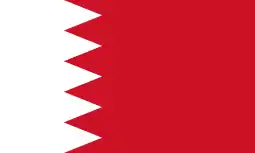 Bahrain[3]
Bahrain[3] Bangladesh
Bangladesh.svg.png.webp) Belgium
Belgium Belize
Belize Bhutan
Bhutan Bolivia
Bolivia Bosnia and Herzegovina
Bosnia and Herzegovina Botswana
Botswana Brazil
Brazil Brunei
Brunei Bulgaria
Bulgaria Burkina Faso
Burkina Faso Burundi
Burundi Cameroon
Cameroon.svg.png.webp) Canada
Canada Cape Verde
Cape Verde Chad
Chad Chile
Chile China
China Colombia
Colombia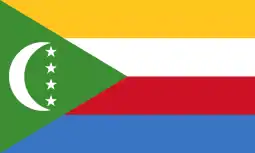 Comoros[229]
Comoros[229] Cook Islands[3]
Cook Islands[3] Costa Rica
Costa Rica Croatia
Croatia Cuba
Cuba Cyprus
Cyprus Czech Republic
Czech Republic Democratic Republic of the Congo
Democratic Republic of the Congo Denmark
Denmark Dominica
Dominica Dominican Republic
Dominican Republic Djibouti
Djibouti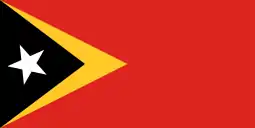 East Timor
East Timor Ecuador
Ecuador Egypt
Egypt El Salvador
El Salvador Equatorial Guinea
Equatorial Guinea Eritrea
Eritrea Estonia
Estonia Eswatini
Eswatini Ethiopia
Ethiopia Finland
Finland France
France French Polynesia[3]
French Polynesia[3] Gabon
Gabon Gambia
Gambia Georgia
Georgia Germany
Germany Ghana
Ghana Gibraltar
Gibraltar Greece
Greece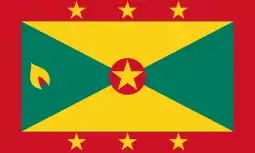 Grenada
Grenada Guatemala
Guatemala Guinea
Guinea Guinea-Bissau
Guinea-Bissau Guyana
Guyana Haiti
Haiti.svg.png.webp) Honduras
Honduras Hong Kong
Hong Kong Hungary
Hungary Iceland
Iceland India[230]
India[230] Indonesia
Indonesia Iraq[230]
Iraq[230] Israel[230]
Israel[230]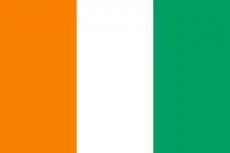 Ivory Coast
Ivory Coast Jamaica
Jamaica Jordan
Jordan Kazakhstan[231]
Kazakhstan[231] Kenya
Kenya Kiribati[229]
Kiribati[229] Kosovo
Kosovo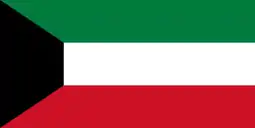 Kuwait[230]
Kuwait[230] Kyrgyzstan[230]
Kyrgyzstan[230] Laos
Laos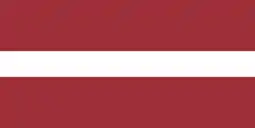 Latvia
Latvia Lebanon
Lebanon Liberia
Liberia Libya
Libya Liechtenstein
Liechtenstein Lithuania
Lithuania Luxembourg
Luxembourg Macau
Macau Macedonia
Macedonia Madagascar
Madagascar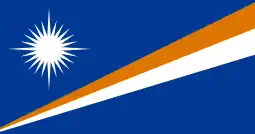 Marshall Islands[230]
Marshall Islands[230] Malawi
Malawi Malaysia
Malaysia Maldives
Maldives Mali
Mali Malta
Malta Mauritania
Mauritania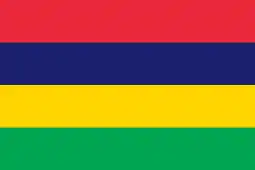 Mauritius
Mauritius Micronesia[230]
Micronesia[230] Moldova
Moldova Mongolia[230]
Mongolia[230] Montenegro
Montenegro Morocco
Morocco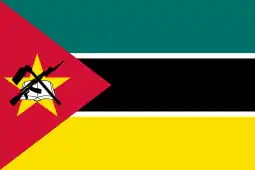 Mozambique
Mozambique Myanmar
Myanmar Namibia
Namibia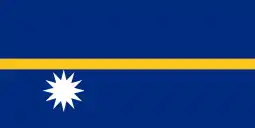 Nauru
Nauru Nepal
Nepal Netherlands
Netherlands New Caledonia
New Caledonia New Zealand
New Zealand Niger
Niger Nigeria[232]
Nigeria[232] Niue
Niue Norway
Norway Oman
Oman Pakistan
Pakistan Panama
Panama Papua New Guinea[233]
Papua New Guinea[233] Paraguay
Paraguay Peru
Peru Philippines
Philippines Poland
Poland Portugal
Portugal Qatar
Qatar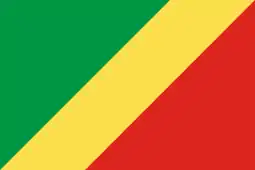 Republic of the Congo
Republic of the Congo Romania
Romania Russia
Russia Rwanda
Rwanda Saint Kitts and Nevis
Saint Kitts and Nevis Saint Lucia[234]
Saint Lucia[234] Saint Vincent and the Grenadines[234]
Saint Vincent and the Grenadines[234]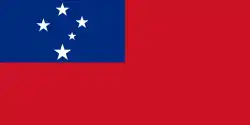 Samoa[229]
Samoa[229] Sao Tome and Principe
Sao Tome and Principe Saudi Arabia[230]
Saudi Arabia[230] Senegal
Senegal Serbia
Serbia Seychelles
Seychelles Sierra Leone
Sierra Leone Singapore
Singapore Sint Maarten[234]
Sint Maarten[234] Slovakia
Slovakia Slovenia
Slovenia Somalia
Somalia Solomon Islands[229]
Solomon Islands[229] South Africa
South Africa South Korea
South Korea South Sudan
South Sudan Spain
Spain Sri Lanka
Sri Lanka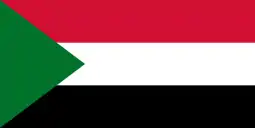 Sudan
Sudan Suriname
Suriname Sweden
Sweden Switzerland
Switzerland Syria
Syria Taiwan
Taiwan Tajikistan[235]
Tajikistan[235] Thailand
Thailand Togo
Togo Tonga
Tonga Trinidad and Tobago[230]
Trinidad and Tobago[230] Tunisia
Tunisia Turkmenistan
Turkmenistan Tuvalu[229]
Tuvalu[229] Uganda
Uganda Ukraine
Ukraine United Arab Emirates
United Arab Emirates Uruguay
Uruguay Uzbekistan
Uzbekistan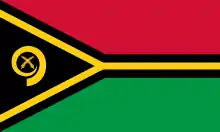 Vanuatu[230]
Vanuatu[230]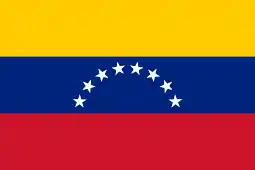 Venezuela
Venezuela Vietnam
Vietnam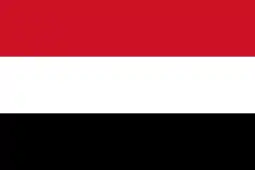 Yemen
Yemen Zimbabwe
Zimbabwe
Statistics
Number of cases and deaths
No. of total confirmed cases
No. of new cases per day
No. of deaths in total
No of deaths per day
No. of active cases
No. of active results
Notes
- The Kuril Islands are administered by Russia, six cases have been reported in the Sakhalin Oblast overall.
References
- "Japan COVID-19 Coronavirus Tracker". covid19japan.com. 8 February 2021. Retrieved 8 February 2021.
- 報道発表資料. Ministry of Health, Labour and Welfare (Japan) (in Japanese). 8 February 2021. Retrieved 8 February 2021.
- Jan 16, Lisa Schnirring; 2020. "Japan has 1st novel coronavirus case; China reports another death". CIDRAP. Retrieved 12 August 2020.CS1 maint: numeric names: authors list (link)
- "Expert Meeting on Control of the Novel Coronavirus Disease Control" (PDF). mhlw.go.jp. Ministry of Health, Labour and Welfare. 1 April 2020. Retrieved 17 April 2020.
- Hasan SM, Saulam J, Kanda K, Ngatu NR, Hirao T (30 June 2020). "Trends in COVID-19 outbreak in Tokyo and Osaka from January 25 to May 06, 2020: a joinpoint regression analysis of the outbreak data". Jpn J Infect Dis. doi:10.7883/yoken.JJID.2020.332. PMID 32611984. S2CID 220304131.
- "国内のコロナ、武漢ではなく欧州から伝播? 感染研調べ:朝日新聞デジタル" [Domestic corona, propagation from Europe instead of Wuhan? Infectious disease research]. 朝日新聞デジタル (in Japanese). The Asahi Shimbun Digital. Retrieved 28 April 2020.
- National Institute of Infectious Diseases (16 April 2020). "Haplotype networks of SARS-CoV-2 infections". Archived from the original on 28 April 2020. Retrieved 28 May 2020.
- Medina-Pérez, Diana N.; Wager, Beau; Troy, Erin; Gao, Lihui; Norris, Steven J.; Lin, Tao; Hu, Linden; Hyde, Jenny A.; Lybecker, Meghan; Skare, Jon T. (4 May 2020). "The intergenic small non-coding RNA ittA is required for optimal infectivity and tissue tropism in Borrelia burgdorferi". PLOS Pathogens. 16 (5): e1008423. doi:10.1371/journal.ppat.1008423. ISSN 1553-7374. PMC 7224557. PMID 32365143.
- "Novel Coronavirus Response Headquarters". Prime Minister of Japan and His Cabinet. 30 January 2020. Retrieved 6 March 2020.
- Thorn, Andrea (June 2020). "Die Coronavirus Structural Task Force". BIOspektrum. 26 (4): 442–443. doi:10.1007/s12268-020-1408-0. ISSN 0947-0867. PMC 7318718. PMID 32834542.
- "PM Abe asks all schools in Japan to temporarily close over coronavirus". Kyodo News.
- "Tokyo 2020 Olympics officially postponed until 2021". ESPN. 24 March 2020.
- Reynolds, Isabel; Nobuhiro, Emi (7 April 2020). "Japan Declares Emergency For Tokyo, Osaka as Hospitals Fill Up". Bloomberg L.P. Retrieved 7 April 2020.
- "Japan PM Abe declares nationwide state of emergency amid virus spread". Mainichi Shimbun. 16 April 2020. Archived from the original on 16 April 2020. Retrieved 16 April 2020.
- Kyodo News (25 May 2020). "Abe declares coronavirus emergency over in Japan".
- Iwasaki, Akiko; Grubaugh, Nathan D. (2020). "Why does Japan have so few cases of COVID‐19?". EMBO Molecular Medicine. 12 (5): e12481. doi:10.15252/emmm.202012481. PMC 7207161. PMID 32275804.
- 国立感染症研究所 (NIID) (27 April 2020). "新型コロナウイルス SARS-CoV-2 のゲノム分⼦疫学調査" (PDF).
- The Yomiuri Shimbun. "Virus strain in Japan possibly spread via Europe, U.S. since March". the-japan-news.com. Retrieved 29 April 2020.
- "WHO | Novel Coronavirus – Japan (ex-China)". WHO. Retrieved 17 January 2020.
- Walter, Sim (16 January 2020). "Japan confirms first case of infection from Wuhan coronavirus; Vietnam quarantines two tourists". The Straits Times. Archived from the original on 16 January 2020. Retrieved 16 January 2020.
- Virus strain in Japan possibly spread via Europe, U.S. since March. The Japan News (29 April 2020).Retrieved 4 May 2020.
- "Second Meeting of the Novel Coronavirus Response Headquarters". Prime Minister of Japan and His Cabinet, 31 January 2020.
- "Ministerial Meeting on Countermeasures Related to the Novel Coronavirus". Prime Minister of Japan and His Cabinet.
- "Japan will label coronavirus as infectious disease to fight spread". The Asahi Shimbun. Retrieved 11 March 2020.
- 新型コロナウイルス感染症対策本部幹事会の構成員の官職の指定について [On the Specification of the Official Positions of the Members of the Novel Coronavirus Response Headquarters] (PDF). Prime Minister of Japan and His Cabinet. 30 January 2020.
- "Fourth Meeting of the Novel Coronavirus Response Headquarters". Prime Minister of Japan and His Cabinet, 1 February 2020.
- "Japan expands entry restrictions to virus-hit Zhejiang". Nikkei Asian Review. Retrieved 15 February 2020.
- "Fifth Meeting of the Novel Coronavirus Response Headquarters". Prime Minister of Japan and His Cabinet. 5 February 2020. Retrieved 6 March 2020.
- [Sixth Meeting of the Novel Coronavirus Response Headquarters "Sixth Meeting of the Novel Coronavirus Response Headquarters", Prime Minister of Japan and His Cabinet, 6 February 2020]
- 新型肺炎「帰国者・接触者相談センター」設置へ 専門外来への受診を促す. Mainichi (in Japanese). 3 February 2020. Retrieved 9 March 2020.
- "Seventh Meeting of the Novel Coronavirus Response Headquarters". Prime Minister of Japan and His Cabinet, 12 February 2020.
- "Japan, alarmed by new cases, to expand, speed up coronavirus tests". The Asahi Shimbun. Retrieved 9 March 2020.
- SRL (12 February 2020). 新型コロナウイルス検査の受託について (PDF).
- "Corporate Japan rushes to devise quick coronavirus tests". Nikkei Asian Review. Retrieved 9 March 2020.
- "Ninth Meeting of the Novel Coronavirus Response Headquarters". Prime Minister of Japan and His Cabinet, 14 February 2020.
- 新型コロナウイルスに関する帰国者・接触者相談センター. Ministry of Health, Labour, and Welfare. 13 February 2020.
- 新型コロナウイルス感染症対策専門家会議の開催について (On the Opening of the First Novel Coronavirus Expert Meeting) (PDF). Prime Minister of Japan and His Cabinet. 14 February 2020. Retrieved 6 March 2020.
- Saitō, Katsuhisa (19 February 2020) "Early Stage of a Japan Outbreak: The Policies Needed to Support Coronavirus Patients". Nippon.com.
- "First Novel Coronavirus Expert Meeting". Prime Minister of Japan and His Cabinet, 19 February 2020.
- "Prevention Measures against Coronavirus Disease 2019 (COVID-19)" (PDF). 厚生労働省. Ministry of Health, Labour, and Welfare. 25 February 2020. Retrieved 20 June 2020.
- 新型コロナウイルス感染症についての相談・受診の目安について (Criterion for Consultation and Medical Examination concerning the Novel Coronavirus Disease) (PDF). Ministry of Health, Labour, and Welfare. 17 February 2020.
- Joshua Hunt. "Japan Is Racing to Test Favipiravir, a Drug to Treat Covid-19". WIRED. Retrieved 8 April 2020.
- "Japan might approve anti-flu drug Avigan to treat coronavirus patients". The Japan Times Online. The Japan Times. 22 February 2020. Retrieved 8 April 2020.
- "Abe Orders Basic Coronavirus Policy with Eye on Epidemic". Nippon.com, 23 February 2020
- "Japanese Experts Discuss Basic Coronavirus Policy". nippon.com. 24 February 2020. Retrieved 8 March 2020.
- 新型コロナウイルス感染症対策専門家会議 (Novel Coronavirus Expert Meeting) (24 February 2020). "新型コロナウイルス感染症対策の基本方針の具体化に向けた見解 (Opinion on the Realization of Basic Policies for Novel Coronavirus Disease Control)". Ministry of Health, Labour, and Welfare.
- "Coronavirus Basic Policy Impacts Japan’s Health, Education Systems". Nippon.com, 2 March 2020
- "新型コロナウイルス感染症対策の基本方針 (Basic Policies for Novel Coronavirus Disease Control)" (PDF). Prime Minister of Japan and His Cabinet. 25 February 2020. Retrieved 6 March 2020.
- "Basic Policies for Novel Coronavirus Disease Control". Prime Minister of Japan and His Cabinet, 25 February 2020.
- "Japan to create a fund to subsidize parents during school closure-Nikkei". Financial Post, 28 February 2020.
- Coronavirus: National Health Insurance to Cover Virus Test. Nippon.com, 27 February 2020
- The Government of Japan, Expert Meeting on the Novel Coronavirus Disease Control (9 March 2020). "Views on the Novel Coronavirus Disease Control (Summary Version)" (PDF). Ministry of Health, Labour and Welfare (in English). Retrieved 15 March 2020.
- 新型コロナウイルス感染症対策専門家会議 (9 March 2020). "新型コロナウイルス感染症対策の見解" (PDF) (in Japanese). Ministry of Health, Labour and Welfare. Retrieved 15 March 2020.
- NEWS, KYODO. "Japan local gov'ts urged to prepare for peak of coronavirus infections". Kyodo News+. Retrieved 12 March 2020.
- "Lawmakers slammed for using coronavirus to justify emergency clause for Japan's Constitution, curbing rights". The Japan Times, 5 February 2020.
- NEWS, KYODO. "Japan's Diet gives Abe power to declare emergency amid viral fears". Kyodo News+. Kyodo News. Retrieved 6 April 2020.
- Revised influenza law to allow Japan PM to declare state of emergency over coronavirus. The Mainichi, 5 March 2020
- NEWS, KYODO. "Japan PM Abe to declare state of emergency amid surge in virus infections". Kyodo News+. Kyodo News. Retrieved 6 April 2020.
- Tomohiro Osaki "How far can Japan go to curb the coronavirus outbreak? Not as far as you may think. The Japan Times, 1 March 2020.
- "Tokyo governor urges people to stay indoors over the weekend as virus cases spike". Japan Times. Kyodo News, Reuters. 25 March 2020. Retrieved 26 March 2020.
- "Tokyo residents asked to stay indoors at weekend due to coronavirus". The Mainichi. Archived from the original on 1 April 2020. Retrieved 26 March 2020.
- Sugiyama, Satoshi (26 March 2020). "Japan coronavirus task force may set stage for state of emergency". The Japan Times Online. ISSN 0447-5763. Retrieved 17 April 2020.
- "Koike calls for fewer outings; says state of emergency up to PM". Japan Today. Retrieved 17 April 2020.
- NEWS, KYODO. "Calls grow for Japan PM to declare state of emergency over virus". Kyodo News+. Kyodo News. Retrieved 17 April 2020.
- "Japan's cities scramble to move mild coronavirus patients to hotels". Nikkei Asian Review. Nihon Keizai Shimbun. Retrieved 17 April 2020.
- "Tokyo reports 83 new coronavirus infections". Kyodo News+. Retrieved 4 July 2020.
- "Tokyo to ask shopping malls, leisure facilities, pubs to close". The Asahu Shimbum. Retrieved 4 July 2020.
- "How to reduce physical contact with others by 80%: Japan medical experts". 毎日新聞. 10 April 2020. Retrieved 4 July 2020.
- "일본 코로나 감염 300여명 새로 확인…하루 최대폭 증가(종합)". mk.co.kr (in Korean). 연합뉴스. 매일경제. 3 April 2020. Retrieved 4 July 2020.
- "Abe declares state of emergency for 7 prefectures". NHK. 7 April 2020. Archived from the original on 7 April 2020. Retrieved 7 April 2020.
- Nakagawa Saori (8 April 2020). "Abe: Crisis will peak in two weeks if human contact is reduced". nhk.or.jp/nhkworld/en/news. NHK World-Japan. 日本放送協会. Retrieved 27 June 2020.
- "Tokyo issues closure requests for 6 categories | NHK WORLD-JAPAN News". NHK WORLD. NHK. Archived from the original on 17 April 2020. Retrieved 17 April 2020.
- "「接触7割減」では収束まで長期化 北大教授が警鐘" ["Prolonged convergence in "70% reduction in contact" will be alarmed by Professor Hokkaido University"] (in Japanese). Nihon Keizai Shimbun. Retrieved 17 April 2020.
- "新型コロナ感染拡大、接触6割減でも感染者数減らず" [The number of infected people does not decrease even if the new corona infection spreads and the contact 60% decrease]. TBS NEWS (in Japanese). Tokyo Broadcasting System. Archived from the original on 18 April 2020. Retrieved 17 April 2020.
- "Japan's Prime Minister Expected to Extend COVID-19 State of Emergency". Voice of America. 4 May 2020. Retrieved 4 May 2020.
- "Japan to lift coronavirus emergency outside Tokyo, Osaka regions". Kyodo news. Retrieved 14 May 2020.
- "緊急事態宣言、大阪、兵庫、京都を解除 首都圏と北海道、25日にも" [Emergency Declaration, Osaka, Hyogo Canceled; Tokyo Metropolitan area and Hokkaido, remains until 25th]. Jiji Press Agency (in Japanese). 21 May 2020. Retrieved 21 May 2020.
- "首都圏、25日にも判断 緊急事態宣言、関西3府県解除" [Tokyo metropolitan area, also determined on the 25th: Emergency situation declared, Kansai 3 prefectures lifted]. Nihon Keizai Shimbun (in Japanese). 21 May 2020. Retrieved 21 May 2020.
- "新型コロナウイルス感染症対策専門家会議の開催について" (PDF). 首相官邸 (Prime Minister's Office of Japan) (in Japanese). 15 April 2020. Retrieved 30 May 2020.
- Eighth Meeting of the Novel Coronavirus Response Headquarters. Prime Minister of Japan and His Cabinet, 12 February 2020.
- "COVID-19: Brief overview of Risk Governance Approach from Japan (Part 3)" (PDF). NIDM. 6 April 2020. Retrieved 27 June 2020.
- "Abe seeks opposition help for emergency virus bill as cases top 1,000". Kyodo News+. KYODO NEWS. 5 March 2020. Retrieved 27 June 2020.
- "3つの"密"を避けて外出を…新型コロナで厚労省が新たな注意喚起を公表". FNNプライムオンライン (in Japanese). Retrieved 18 April 2020.
- 首相官邸(災害・危機管理情報) (17 March 2020). "【注意喚起】#新型コロナウイルス に関するお知らせ". Twitter @kantei_saigai (in Japanese). Retrieved 18 April 2020.
- "「3つの密」、誕生の背景とは? – 押谷・東北大教授(厚労省クラスター対策班)|医療維新 – m3.comの医療コラム". www.m3.com (in Japanese). Retrieved 15 May 2020.
- "Avoid the "Three Cs"!" (PDF). Japanese Ministry of Health, Labour and Welfare. Retrieved 30 September 2020.
- @WHO (16 July 2020). "Avoid the 3 Cs. There are certain places where #COVID19 spreads more easily: (1) Crowded places (2) Close-contact settings (3) Confined and enclosed spaces" (Tweet). Retrieved 30 September 2020 – via Twitter.
- "People with Fever for 4 Days Asked to Seek Advice on Coronavirus". Jiji Press. 17 February 2020. Retrieved 28 March 2020.
- "Japan PM Abe urges people with cold-like symptoms to avoid work, school". Kyodo News. 18 February 2020. Retrieved 28 March 2020.
- Dooley B, Rich M, Inoue M (29 February 2020). "In Graying Japan, Many Are Vulnerable but Few Are Being Tested". The New York Times. ISSN 0362-4331. Retrieved 29 February 2020.
- "Japan's Virus Success Has Puzzled the World. Is Its Luck Running Out?". 26 March 2020. Retrieved 29 March 2020.
- "新型肺炎174人の集団感染「クルーズ船3700人隔離は正しかったのか」医師の見解は?" [Outbreak of 174 new cases of pneumonia "Is the isolation of 3700 cruise ships correct?" What is the doctor's view?]. 文春オンライン (in Japanese). 13 February 2020. Retrieved 8 June 2020.
- 関西テレビ放送, KTV. 「検査できない」一般の医療機関も困惑 新型コロナウイルス. ktv.jp (in Japanese).
- "Archived copy" 病院4回...でも検査できず 新型肺炎 不安の声. FNN.jp (in Japanese). Archived from the original on 27 February 2020. Retrieved 27 February 2020.CS1 maint: archived copy as title (link)
- "Archived copy" 「発熱 続いてるのに・・・」"検査難民"の不安. TBS NEWS (in Japanese). Archived from the original on 27 February 2020. Retrieved 27 February 2020.CS1 maint: archived copy as title (link)
- "Archived copy" 新型ウイルス「検査受けられず」の声相次ぐ いま現場では. NHK (in Japanese). Archived from the original on 28 February 2020. Retrieved 27 February 2020.CS1 maint: archived copy as title (link)
- "ウイルス検査できない 病院悲鳴" ウイルス検査できない 病院悲鳴. TBS NEWS (in Japanese). Archived from the original on 24 February 2020. Retrieved 27 February 2020.
- 医療機関たらい回しも 疑い受診、断られ―「検査基準あいまい」・新型肺炎:時事ドットコム. 時事通信 (in Japanese).
- "Archived copy" 暮らしを守れ 新型コロナ 受けたくてもなぜ "検査難民". FNN.jp (in Japanese). Archived from the original on 27 February 2020. Retrieved 27 February 2020.CS1 maint: archived copy as title (link)
- "Archived copy" ウイルス検査依頼も拒否される事例 日本医師会が調査へ. NHK (in Japanese). Archived from the original on 2 March 2020. Retrieved 27 February 2020.CS1 maint: archived copy as title (link)
- "Archived copy" 厚労省、PCR検査の不適切事例把握へ. TBS NEWS (in Japanese). Archived from the original on 27 February 2020. Retrieved 27 February 2020.CS1 maint: archived copy as title (link)
- "Japan's Abe Seeks to Defuse Virus Criticism With Cash, Testing". Bloomberg L.P. Retrieved 29 February 2020.
- "新型コロナ「五輪延期後に検査急増」は本当か 「感染隠蔽」説を検証すると…". Mainichi Shimbun (in Japanese). 28 March 2020. Retrieved 8 June 2020.
- "「五輪延期決定で検査を抑制する必要がなくなった」は誤り。検査人数が変動した事実はなし". BuzzFeed News (in Japanese). 31 March 2020. Retrieved 8 June 2020.
- "As coronavirus infections mount, Japan at last expands testing". Japan Today.
- "20代の感染者は日本の69人に対して韓国は2301人! PCR検査数の差か?". Yahoo!ニュース (in Japanese). 19 March 2020. Retrieved 8 June 2020.
- "感染者もPCR検査も韓国は日本の17倍!韓国の感染者急増はPCR検査数の差?". Yahoo!ニュース (in Japanese). 5 March 2020. Retrieved 8 June 2020.
- "日本のPCR検査は十分か?の疑問を徹底解説。新型コロナウイルス診断現場の実情". Business Insider (in Japanese). 18 March 2020. Retrieved 8 June 2020.
- "データでみる世界各国の新型コロナウイルスの検査状況!". データのじかん (in Japanese). 18 March 2020. Retrieved 8 June 2020.
- "新型コロナウイルスの検査 世界の検査数は? 日本の現状は?". NHK (in Japanese). 18 March 2020. Archived from the original on 18 March 2020. Retrieved 8 June 2020.
- "Coronavirus quarantine plans ignite row between South Korea and Japan". The Guardian. 6 March 2020. Retrieved 18 March 2020.
- "Japan and Korea Won't Let A Pandemic Stop Them Fighting". Foreign Policy. 12 March 2020. Retrieved 18 March 2020.
- "事実上、中国人と韓国人の入国を制限 イランも新たに対象". SankeiBiz (in Japanese). 5 March 2020. Retrieved 8 June 2020.
- "世界的な感染拡大、政府の対応は後手後手に" [Global infection spread, government response is late] (in Japanese). 東洋経済. 6 March 2020. Retrieved 8 June 2020.
- "新型コロナウイルス 日本の入国制限に韓国猛反発" [New Coronavirus: Korean opposition to Japanese entry restrictions] (in Japanese). FNNプライム. 8 March 2020. Retrieved 8 June 2020.
- "10万円給付とマイナンバー". Japan In-depth (in Japanese). dmenuニュース. 1 May 2020. Archived from the original on 7 June 2020. Retrieved 8 June 2020.
- "マイナンバーカードを活用した現金給付に期待". Nomura Research Institute, Ltd. (in Japanese). dmenuニュース. 15 April 2020. Retrieved 8 June 2020.
- "現金10万円給付 マイナンバーは余計だ". Tokyo Shimbun (in Japanese). 13 May 2020. Retrieved 8 June 2020.
- "コロナに乗じて国民をコントロールする気か?政府「マイナンバー普及」発言にネット拒否反応". MONEY VOICE (in Japanese). MAG2NEWS. 6 March 2020. Retrieved 8 June 2020.
- "Japan government weighs mandatory linkage of My Number with bank account". The Japan Times. The Japan Times Limited. Jiji Press Agency. 8 June 2020. Retrieved 16 June 2020.
- Kazuhiko Hori (10 June 2020). "Japan gov't looks to link 1 bank account to 'My Number': minister". The Mainichi Shimbun. The Mainichi Newspaper. Retrieved 16 June 2020.
- "布マスク、検品に8億円 妊婦向けで不良品" [800 million yen for cloth masks and inspections Defective products for pregnant women]. Sankei Biz (in Japanese). 14 May 2020. Retrieved 23 May 2020.
- "【アベノマスク】届いてない妊婦用布マスクの『検品』に8億円。不良品発覚で厚労省明かす。「また税金使うの?」と疑問の声" [[Abeno Mask] 800 million yen for the "inspection" of pregnant women's cloth masks that have not arrived. The Ministry of Health, Labor, and Welfare reveals defective products. "Do you use tax again?"]. HuffPost Japan (in Japanese). 14 May 2020. Retrieved 23 May 2020.
- "アベノマスク「第4の受注業者」にユースビオが入った本当の理由". AERA (in Japanese). M&A Online. 29 April 2020. Retrieved 8 June 2020.
- "渦中のユースビオ社長が「ペーパーカンパニー」疑惑に反論!「アベノマスク」生産現場の驚くべき実態". AERA (in Japanese). Asahi Shimbun. 3 May 2020. Retrieved 8 June 2020.
- "アベノマスク「国策」随契2社、深まる謎". Mainichi Shimbun (in Japanese). Mainichi Shimbunsha. 2 May 2020. Retrieved 8 June 2020.
- "マスクは首相の地元・山口県の企業が受注?「全世帯配布」で駆け巡ったツイート". Mainichi Shimbun (in Japanese). Mainichi Shimbunsha. 2 April 2020. Retrieved 8 June 2020.
- "7都府県で4月の「超過死亡」激増 東京1056人"隠れコロナ死"の可能性【#コロナとどう暮らす】" [“Excess mortality” dramatically increased in April in 7 prefectures. The possibility of “hidden corona death” in 1056 people in Tokyo [# How to live with corona]] (in Japanese). Nikkan Gendai. Retrieved 17 June 2020.
- "「統計上はコロナではないが…」東京の4月死亡者数は例年より1000人以上多い" ["Statistically it's not corona..." Tokyo has more than 1,000 deaths in April] (in Japanese). President Online. Archived from the original on 17 June 2020. Retrieved 17 June 2020.
- "都内死者 3、4月過去最多 「超過死亡」コロナ公表人数の12倍 医療逼迫影響か" [Deaths in Tokyo: record high in March and April: 12 times the number of “excess death” coronas announced] (in Japanese). Sankei Shimbun. Archived from the original on 18 June 2020. Retrieved 17 June 2020.
- "大相撲・勝武士を数えず…コロナ死亡者「20代ゼロ」の"誤報"を続ける厚労省の言い分" [Counting sumo wrestlers and Katsutake samurai... The Ministry of Health, Labor and Welfare continues to give "misinformation" of corona death "20s zero"] (in Japanese). Nikkan Gendai. Archived from the original on 17 June 2020. Retrieved 17 June 2020.
- Ministry of Health, Labour and Welfare (19 March 2020). "Expert Meeting on the Novel Coronavirus Disease Control Analysis of the Response to the Novel Coronavirus (COVID-19) and Recommendations (Excerpt)" (PDF).
- Iwanaga, Naoko. "「今はまだ諦める時期じゃない」「一斉休校は議論していない」 新型コロナ専門家会議の委員が協力を呼びかけること". BuzzFeed. Retrieved 12 May 2020.
- "新型コロナウイルス クラスター対策班の設置について" (in Japanese). Ministry of Health, Labour and Welfare. Retrieved 18 March 2020.
- "新型コロナウイルス感染症 クラスター対策による感染拡大防止" (PDF) (in Japanese). Ministry of Health, Labour and Welfare. 25 February 2020. Retrieved 18 March 2020.
- "Japan's contact-tracing method is old but gold" [Despite its high-tech prowess, Japan has taken an almost quaintly old-fashioned approach to contact tracing]. The Asia Times. June 2020. Retrieved 5 June 2020.
- "Battling the coronavirus: An interview with Professor Kawaoka Yoshihiro | NHK WORLD-JAPAN News". NHK WORLD. Retrieved 12 May 2020.
- Ministry of Health, Labour and Welfare (9 March 2020). "新型コロナウイルス感染症対策専門家会議 「新型コロナウイルス感染症対策の見解」" (PDF).
- Ministry of Health, Labour and Welfare (22 April 2020). "Expert Meeting on the Novel Coronavirus Disease Control Analysis and Recommendations of the Response to the Novel Coronavirus (COVID-19)" (PDF).
- Ministry of Health, Labour and Welfare (4 May 2020). "新型コロナウイルスを想定した「新しい生活様式」を公表しました".
- Omura, T (2020). "Geriatric practice during and after the COVID ‐19 pandemic". Geriatr Gerontol Int. 20 (7): 735–737. doi:10.1111/ggi.13958. PMC 7280712. PMID 32428997.
- "新型コロナ:道内の発生状況 | 保健福祉部健康安全局地域保健課". www.pref.hokkaido.lg.jp. Retrieved 20 February 2020.
- "新型肺炎患者、道内で初確認 中国人女性、道内で入院" [New pneumonia patient, first confirmed in Hokkaido, Chinese woman hospitalised in Hokkaido]. Hokkaido Shimbun (in Japanese). 28 January 2020. Retrieved 25 March 2020.
- "新型肺炎 道民が初感染 50代男性、容体は重篤" [New-type pneumonia first infections in residents, male in his fifties falls severely ill]. Tomakomai Minpō (in Japanese). 15 February 2020. Retrieved 25 March 2020.
- "新たなステージへ(コロナ)" [A new stage of coronavirus]. Hokkaido Government (in Japanese). Retrieved 25 March 2020.
- "Information on the Coronavirus (COVID-19) – Iwate Prefecture". 岩手県 Iwate Prefecture (in Japanese). Retrieved 14 July 2020.
- "愛知県内の感染者・遺伝子検査件数 – 愛知県". www.pref.aichi.jp. Retrieved 18 March 2020.
- "「クラスター 名古屋市中心に2つ発生」愛知県知事". NHK (in Japanese). 5 March 2020. Archived from the original on 12 March 2020. Retrieved 1 April 2020.
- "大阪モデル 黄色信号の基準に|NHK 関西のニュース". NHK NEWS WEB. Retrieved 14 July 2020.
- "Kyoto hotels hit by 90% slump in foreign stays as pandemic takes toll". Kyodo News+. KYODO NEWS. Retrieved 14 July 2020.
- Uchida kanji, Kuroishi Noriyuki (24 May 2020). "新型コロナ、北九州市で新たに3人 福岡市では再陽性1人" [New Corona: 3 new in Kitakyushu City, 1 re-positive in Fukuoka City]. www.nishinippon.co.jp/item (in Japanese). 西日本新問社. 西日本新問. Retrieved 28 June 2020.
- Kōno Daisuke, Toyofuku Sachiko (2 July 2020). "鹿児島市で9人感染、クラスターか 福岡では4人確認 新型コロナ" [9 people infected in Kagoshima city, cluster … 4 people confirmed in Fukuoka]. www.nishinippon.co.jp/item (in Japanese). 西日本新問社. 西日本新問. Retrieved 2 July 2020.
- Nippon.com
- "Japan reports 20th case of coronavirus as Abe vows new steps to combat outbreak". Japan Times. 1 February 2020. ISSN 0447-5763. Archived from the original on 1 February 2020. Retrieved 1 February 2020.
- "South Korea says Chinese tour guide arriving from Japan found to be infected with coronavirus". Japan Times. 1 February 2020. ISSN 0447-5763. Archived from the original on 1 February 2020. Retrieved 1 February 2020.
- Pearl Bantillo (18 May 2020). "Japan economy falls into recession; Q1 GDP contracts 3.4% year on year".
- Takahashi, Ryusei (31 January 2020). "Amid virus outbreak, Japan stores scramble to meet demand for face masks". Japan Times. ISSN 0447-5763. Archived from the original on 1 February 2020. Retrieved 1 February 2020.
- "Japan seeks to contain economic impact of virus, new measures come into effect". Reuters. 1 February 2020. Archived from the original on 1 February 2020. Retrieved 1 February 2020.
- Pfanner, Eric (30 January 2020). "Chinese tourists finding they are no longer welcome as fear over coronavirus takes hold". Japan Times. ISSN 0447-5763. Archived from the original on 31 January 2020. Retrieved 31 January 2020.
- Siripala, Thisanka (13 February 2020). "Will Japan's Economy Buckle Under the Coronavirus Outbreak?". thediplomat.com. Retrieved 14 February 2020.
- Nohara, Yoshiaki (31 January 2020). "Japan Considers Extra Spending Over Coronavirus's Impact on Tourism". MSN. Archived from the original on 31 January 2020.
- "Chinese coronavirus fear spreads over luxury, retail sectors". spglobal.com. Archived from the original on 1 February 2020. Retrieved 1 February 2020.
- https://www.scmp.com/abacus/news-bites/article/3049328/nintendo-blames-coronavirus-delayed-switch-shipments-and
- "名古屋高速 料金所事務員が新型コロナ感染 6料金所を閉鎖". NHKニュース. Archived from the original on 13 March 2020. Retrieved 25 February 2020.
- "Sumo: Spring meet unlikely to be held in "regular" fashion: JSA". Kyodo News. 28 February 2020. Retrieved 28 February 2020.
- "Coronavirus Forces Bettors Online in Japan".
- "Reigning CL MVP Hayato Sakamoto one of two Giants players to test positive for COVID-19". The Japan Times. 3 June 2020. Retrieved 5 June 2020.
- "IOC, IPC, Tokyo 2020 Organising Committee and Tokyo Metropolitan Government Announce New Dates for the Olympic and Paralympic Games Tokyo 2020". olympic.org. 30 March 2020. Retrieved 30 March 2020.
- Pavitt, Michael (20 March 2020). "Rescheduled Tokyo 2020 Olympics to open on July 23 in 2021". insidethegames.biz. Retrieved 20 March 2020.
- "Abe: Next 2 weeks 'crucial' in virus battle NHK WORLD-JAPAN News". NHK World Japan. 26 February 2020. Archived from the original on 9 March 2020. Retrieved 16 March 2020.
- "Organizers asked for event cancellations for two weeks amid coronavirus spread". KYODO NEWS. 27 February 2020. Retrieved 5 April 2020.
- アニメイベント「AnimeJapan 2020」も中止 新型コロナウイルスの拡大で. IT Media (in Japanese). 27 February 2020. Retrieved 6 March 2020.
- "Tokyo Disneyland to stay closed through early April due to virus". Reuters. 11 March 2020. Retrieved 8 April 2020.
- "Tokyo Disneyland Extends Shutdown, May See Longest-Ever Closure". Bloomberg News. 11 March 2020. Retrieved 8 April 2020.
- Davis, River (19 March 2020). "Coronavirus Puts Hopes Pinned to Tokyo Olympics Tourists in Jeopardy". Wall Street Journal. ISSN 0099-9660. Retrieved 8 April 2020.
- Bevil, Dewayne (20 March 2020). "Legoland Japan set to reopen Monday after three-week coronavirus closure". Orlando Sentinel. Retrieved 23 March 2020.
- "Japan quietly reopens as much of world locks down". Nikkei Asian Review. Retrieved 8 April 2020.
- "Tokyo Disneyland won't reopen before April 20, operator says". Japan Today. Archived from the original on 28 March 2020. Retrieved 8 April 2020.
- "Major theme parks in Japan extend closures". NHK World. 27 March 2020. Retrieved 8 April 2020.
- "Tokyo DisneySea Reopening date and park operations procedures". Tokyo Disneyland. Retrieved 1 July 2020.
- 東京MX、新型肺炎でアニメ「とある科学の超電磁砲T」放送延期 「制作上の都合がつかず」. IT Media (in Japanese). 17 February 2020. Retrieved 6 March 2020.
- TVアニメ『A3!』「SEASON SPRING & SUMMER」第4話以降の放送が延期に. Animate Times (in Japanese). Retrieved 6 March 2020.
- "「魔進戦隊キラメイジャー」主人公役の小宮璃央が新型コロナ感染" (in Japanese). Livedoor. 31 March 2020. Retrieved 31 March 2020.
- "ACTOR NEWSKiramaRed Actor Rio Komiya Tests Positive for COVID-19". Tokusatsu Network. 31 March 2020. Retrieved 31 March 2020.
- "東映東京撮影所は消毒作業 レッド役がコロナ陽性" (in Japanese). Nikkan Sports. 31 March 2020. Retrieved 31 March 2020.
- "Japan's Toei Closes Tokyo Studio After Coronavirus Infection". Variety. 31 March 2020. Retrieved 31 March 2020.
- Schilling, Mark (25 March 2020). "Japan's Ken Shimura Infected by Coronavirus, 'God of Cinema' Filming Halted". Variety. Retrieved 8 April 2020.
- "Japanese Comedian Ken Shimura Dies From Coronavirus at 70". The Hollywood Reporter. Retrieved 30 March 2020.
- "Japan comedian Ken Shimura dies after coronavirus infection". Nikkei Asian Review. 29 March 2020. Retrieved 30 March 2020.
- "Japanese comedian Ken Shimura dies from coronavirus". Reuters. 29 March 2020. Retrieved 30 March 2020.
- "日テレ、4月期ドラマ『ハケンの品格』『未満警察』の初回延期へ". Oricon news (in Japanese). Retrieved 8 May 2020.
- "「半沢直樹」「MIU404」「わたナギ」が放送延期、新型コロナ流行で撮影に遅れ". Natalie (in Japanese). Retrieved 8 May 2020.
- "石原さとみ、西野七瀬ら延期の『アンサング・シンデレラ』集合写真 「待ってます」の声". @nifty news (in Japanese). Retrieved 8 May 2020.
- "鈴木保奈美 「スーツ2」放送中断に「残念で悔しく悲しく…少し泣いた」それでも「負けませんよ」". Sponichi Annex (in Japanese). Retrieved 8 May 2020.
- "NHK、ドラマ3作放送延期発表". モデルプレス (in Japanese). 6 April 2020. Retrieved 8 May 2020.
- "NHKドラマ3本延期発表、新型コロナ拡大の影響で". Nikkan Sports (in Japanese). 5 April 2020. Retrieved 8 May 2020.
- Hodgkins, Crystalyn. "New Pokémon TV Anime Delays New Episodes Due to COVID-19". Anime News Network. Archived from the original on 21 April 2020. Retrieved 19 April 2020.
- Pineda, Rafael Antonio (20 April 2020). "Digimon Adventure:, Healin' Good Precure Delay New Episodes Due to COVID-19". Anime News Network. Archived from the original on 20 April 2020. Retrieved 20 April 2020.
- "Chibi Maruko-chan Anime Delays New Episodes Due to COVID-19". Anime News Network. 26 April 2020. Retrieved 8 May 2020.
- Chappell B. "Coronavirus Updates: Italy Reports 650 Cases And 17 Deaths". NPR.org. Retrieved 15 March 2020.
- NEWS, KYODO. "Hokkaido eyes temporary shutdown of all schools to fight coronavirus". Kyodo News+. Retrieved 15 March 2020.
- "Almost 99% of Japan's public elementary schools shut as COVID-19 spreads". The Japan Times Online. 5 March 2020. ISSN 0447-5763. Retrieved 15 March 2020.
- "This is a good time to change Japan's academic year". The Japan Times. 9 April 2020. Retrieved 6 June 2020.
- "Japan shouldn't rush decision on academic year, scholars caution". The Japan Times. 11 May 2020. Retrieved 6 June 2020.
- "COVID-19 reports sparking boorish behavior in communities | Asahi Shinbun |". Retrieved 8 July 2020.
- 龙玥. "日本民间捐100万口罩驰援武汉" [Japanese people donate 1 million masks to support Wuhan]. 观察者网 (in Chinese). Shanghai. Retrieved 8 March 2020.
- "《武漢肺炎》中國自嗨?日媒:日本捐百萬口罩 事主出面打臉 – 國際 – 自由時報電子報". 自由電子報 (in Chinese). 27 January 2020. Archived from the original on 28 January 2020. Retrieved 4 February 2020.
- "中国に100万枚以上のマスク寄付。日本企業や市、新型コロナウイルス感染拡大で" (in Japanese). Yahoo! Japan. 28 January 2020.
- Consulate General of Japan in Chongqing (28 January 2020). "日本水户市向重庆市捐赠50000份医用口罩" (in Chinese). Archived from the original on 30 January 2020. Retrieved 7 February 2020.
- ""山川異域,風月同天":外交部感謝日本協助抗疫的暖心舉動" (in Chinese). 4 February 2020. Archived from the original on 5 February 2020. Retrieved 6 February 2020.
- "日本執政黨國會議員每人將向中國捐款5000日元" (in Chinese). The Nikkei. Archived from the original on 11 February 2020. Retrieved 14 February 2020.
- McCurry, Justin (13 November 2020). "Return of a ramen pioneer gives boost to Japan's Covid-hit restaurant sector". The Guardian. ISSN 0261-3077. Retrieved 13 November 2020.
- Wang, S; Wright, R; Wakatsuki, Y (4 February 2020). "In Japan, more people died from suicide last month than from Covid in all of 2020. And women have been impacted most". CNN. Retrieved 29 November 2020.
- Kaila Imada (6 April 2020). "100-year-old Hirosaki Cherry Blossom Festival in Aomori is cancelled this year". Time Out Tokyo. Retrieved 6 April 2020.
- "黒石ねぷた祭り中止決定 65年の歴史で初" [Kuroishi Neputa Matsuri cancelled for the first time in its 65-year-long history]. Mutsu Shimpō (in Japanese). 6 April 2020. Retrieved 6 April 2020.
- "青森ねぶた祭中止 正式決定 新型コロナウイルス" [Officials cancel Aomori Nebuta Festival due to coronavirus]. NHK (in Japanese). 8 April 2020. Archived from the original on 17 April 2020. Retrieved 8 April 2020.
- "令和2年(2020年)八王子まつりの中止について" [About cancellation of Hachioji Festival in the second year of Reiwa (2020)]. www.hachiojimatsuri.jp (in Japanese). 18 May 2020. Retrieved 12 July 2020.
- "時代祭の行列を中止へ 京都三大祭り、すべてが規模縮小" [Jidai Festival Procession to Be Abandoned … Kyoto's three major festivals, all scale down]. www.asahi.com/articles (in Japanese). The Asahi Shimbun Company. 朝日新聞. 11 July 2020. Retrieved 12 July 2020.
- Saskia Gilmour (29 June 2020). "Kishiwada Danjiri Matsuri [Cancelled]". en.japantravel.com. Retrieved 12 July 2020.
- "博多山笠、来夏へ「延期」 博多松囃子も". Nishinippon Shimbun (in Japanese). 20 April 2020. Retrieved 10 May 2020.
- "博多山笠、開催見送り 戦後初めて". Nihon Keizai Shimbun (in Japanese). 20 April 2020. Retrieved 10 May 2020.
- "CORONA SUNSETS FESTIVAL 2020 の開催について | Corona SUNSETS FESTIVAL".
- 広島みなと花火、20年夏は開催中止 五輪で警備員不足 日本経済新聞 2019. 10. 31. Translation: Also "Miyajima underwater fireworks" to be held in Miyajima in late August every year (Hatsukaichi, Hiroshima Prefecture), has decided to hold discontinuation of 20 years for the same reason.
- Notice of postponement of Sansha Festival Asakusa Shrine 2020.04.01 Translation:This postponement will be applied to all annual festival events including Shinto ceremonies such as “Headquarters Mikoshi Town Tomi”. As for the method of travel, the highest priority is to ensure safety, and the decision will be made on August 31st.
- "Coronavirus (COVID-19) advisory information | Travel Japan | JNTO". Japan National Tourism Organization (JNTO). Retrieved 1 May 2020.
- "新型コロナウイルス(日本からの渡航者・日本人に対する 各国・地域の入国制限措置及び入国・入域後の行動制限)". Ministry of Foreign Affairs of Japan. Archived from the original on 9 March 2020. Retrieved 12 March 2020.
- De 2020, 12 De Marzo. "El Gobierno suspendió por 30 días todos los vuelos internacionales provenientes de zonas afectadas por el coronavirus". Infobae (in Spanish). Retrieved 13 March 2020.
- "Coronavirus: visas suspendidas transitoriamente a extranjeros". El Canciller (in Spanish). 12 March 2020. Retrieved 13 March 2020.
- "More countries, regions restrict entry from Japan". NHK WORLD-Japan News. Archived from the original on 5 March 2020. Retrieved 5 March 2020.
- "18 countries, regions restricting entry from Japan over virus". Mainichi Daily News. 3 March 2020. Retrieved 15 March 2020.
- "Kazakhstan bars entry for nationals of China, Japan, Iran, Italy, South Korea". akipress.com. Retrieved 7 March 2020.
- Stephanie Busari; Bukola Adebayo. "Nigeria bans entry for travelers from 13 countries as it announces five new cases of coronavirus". CNN. Retrieved 18 March 2020.
- "Papua New Guinea bans travellers from all 'Asian ports'". news.yahoo.com. Retrieved 5 March 2020.
- "IATA – International Travel Document News". www.iatatravelcentre.com. Retrieved 9 March 2020.
- "Tajikistan shuts border to nationals of 35 countries: sources". Reuters. 2 March 2020. Retrieved 5 March 2020.
External links
- "新型コロナウイルス感染症について" [About Coronavirus Disease 2019 (COVID-19)] (in Japanese). Ministry of Health, Labour and Welfare. Retrieved 11 March 2020. – includes situation reports of the outbreak in Japan.
- In English: "About Coronavirus Disease 2019 (COVID-19)". Ministry of Health, Labour and Welfare. Retrieved 11 March 2020.
- "新型コロナウイルス 特設サイト" (in Japanese). NHK. Retrieved 11 March 2020.
- In English: "NHK WORLD – JAPAN Coronavirus outbreak". NHK World-Japan. Retrieved 31 March 2020.
- "新型コロナウイルス 特設サイト" (in Japanese). TBS News.
- "新型コロナウイルス 特設サイト" (in Japanese). Toyo Keizai.
- "新型コロナウイルス ニュース Updates" (in Japanese). The Nikkei.
- "新型コロナウイルス 特設サイト" (in Japanese). Chunichi Shimbun.
- In English: "Coronavirus outbreak updates". Kyodo News.
- In English: "Latest COVID-19 news updates". The Japan Times.
- In English: "COVID-19 Update Article List". The Asahi Shimbun.
- In English: "Coronavirus (COVID-19) infections in Japan". Mainichi Shimbun.
- Coronavirus COVID-19 Global Cases and historical data by Johns Hopkins University